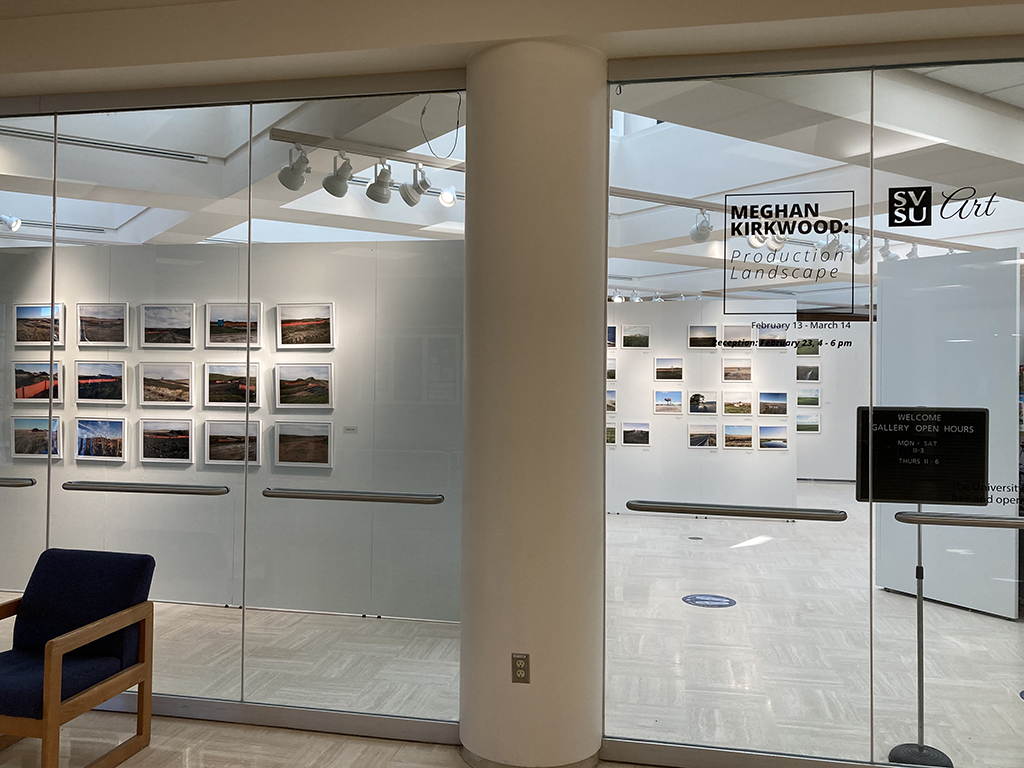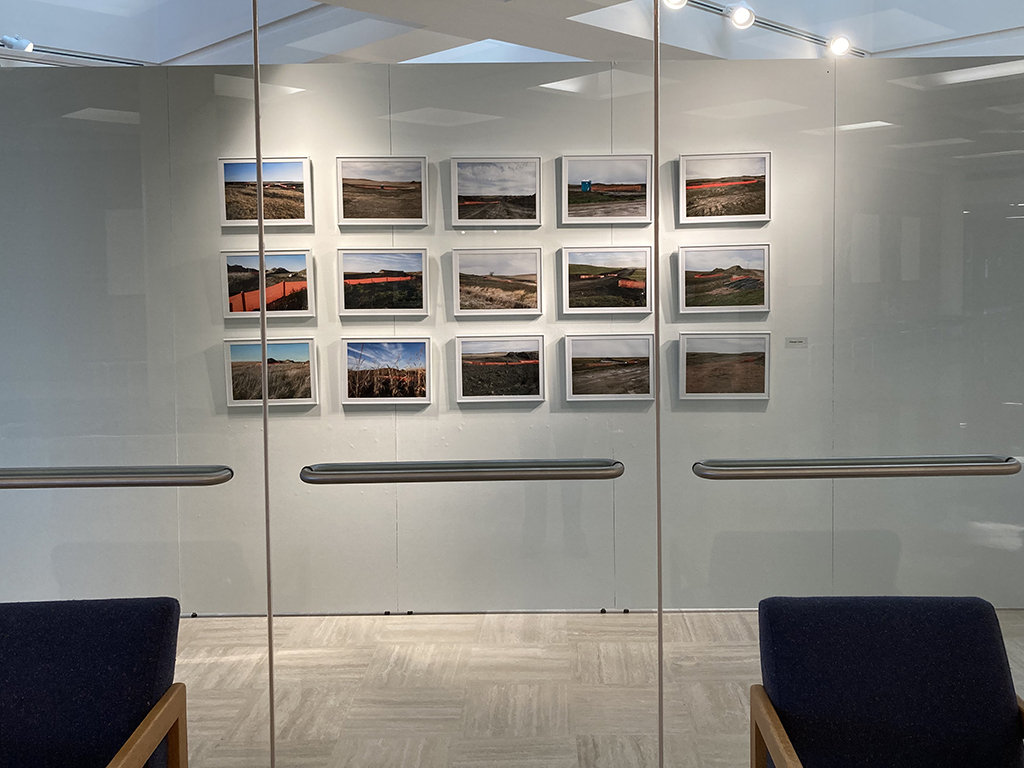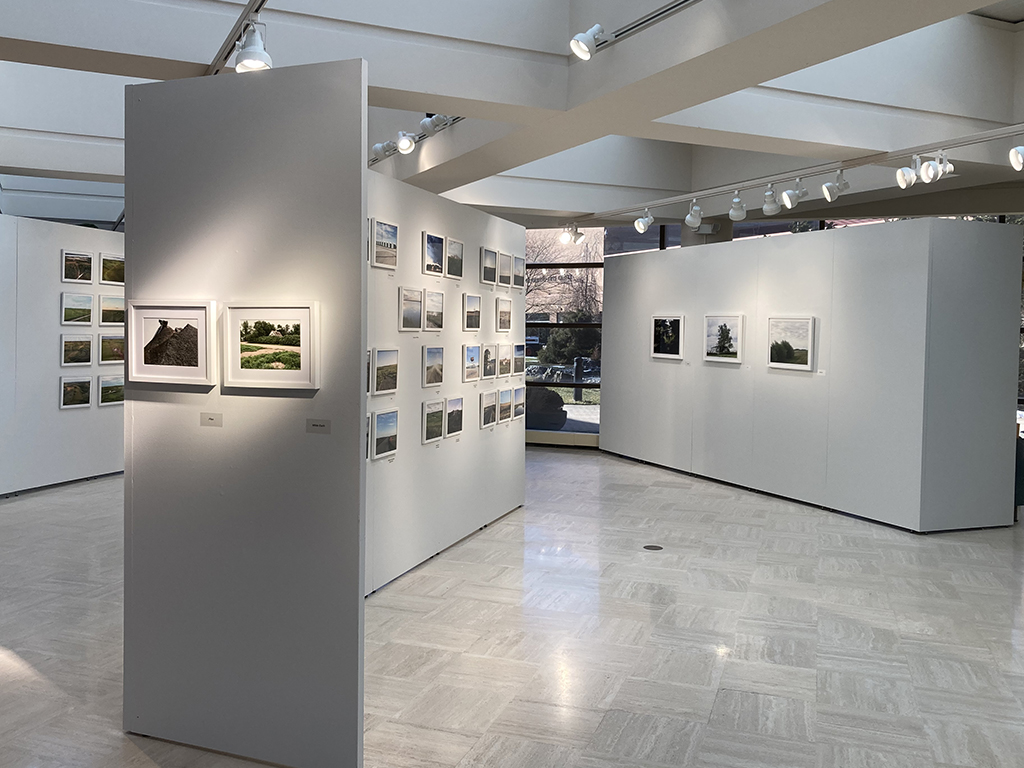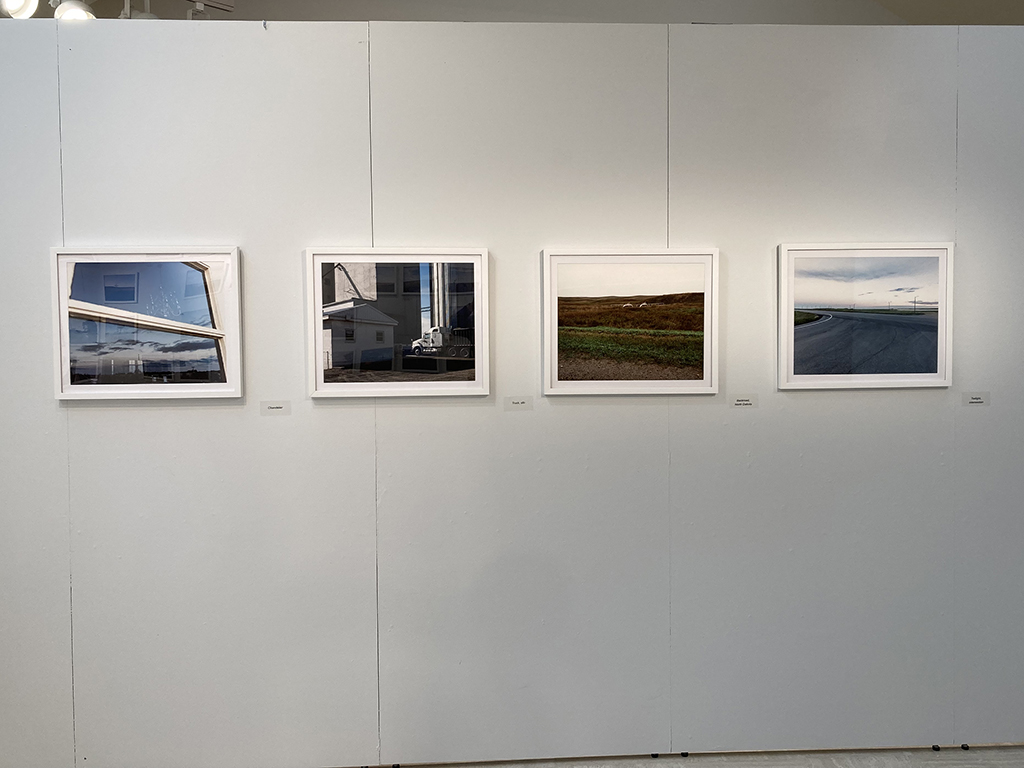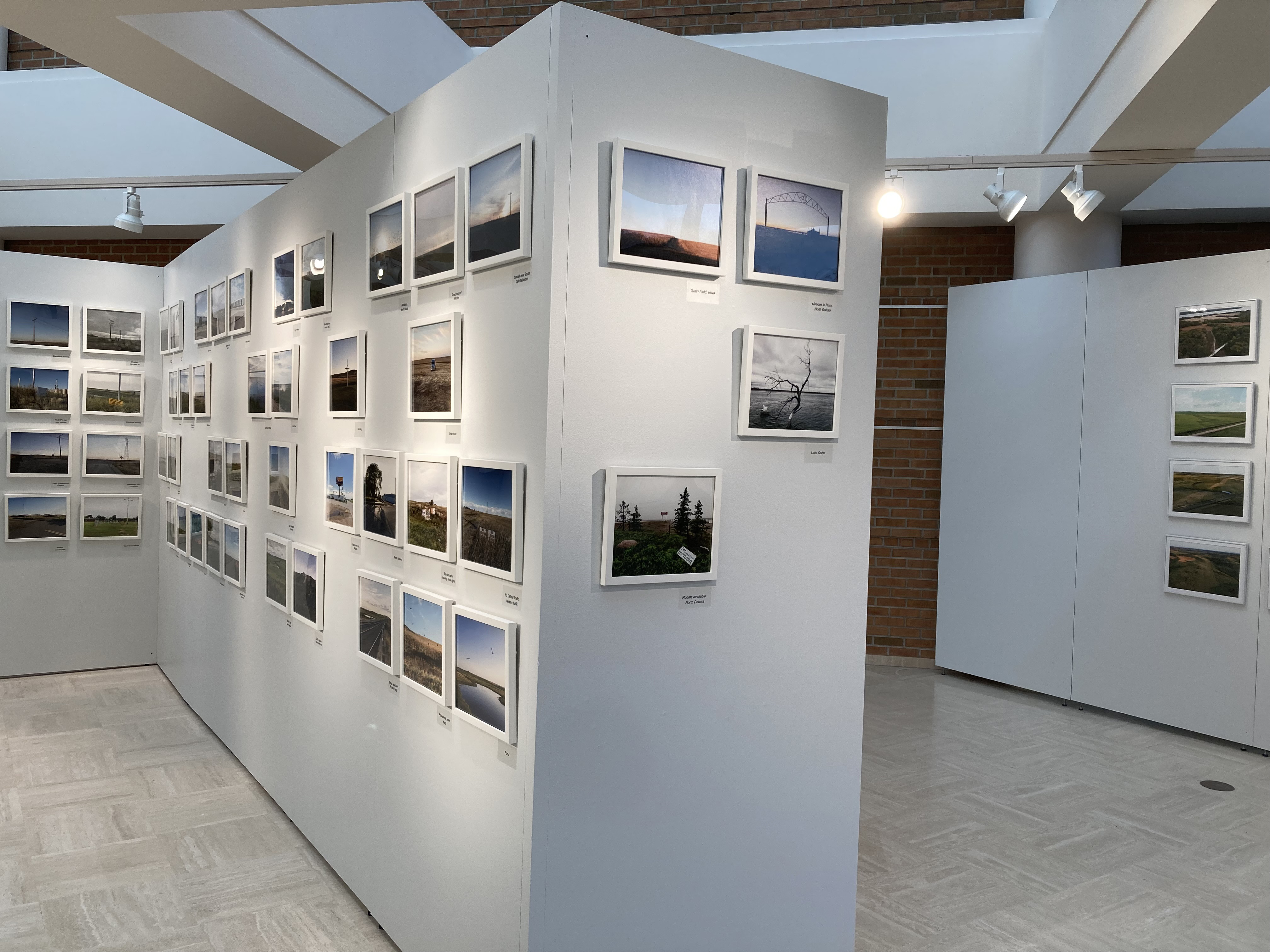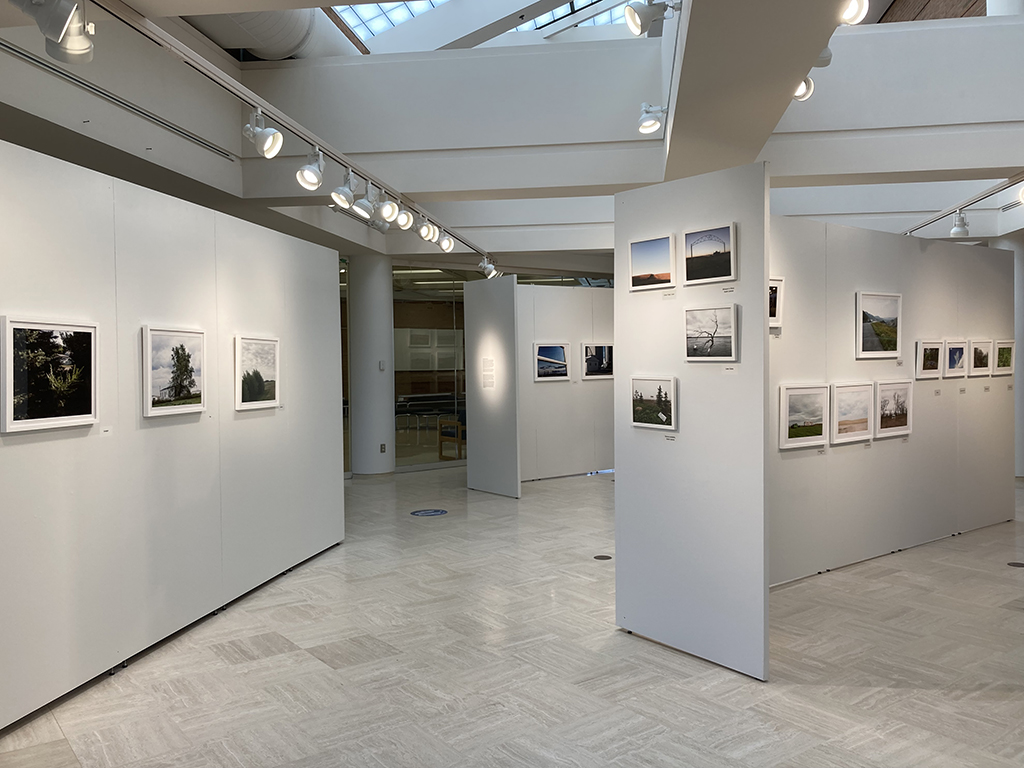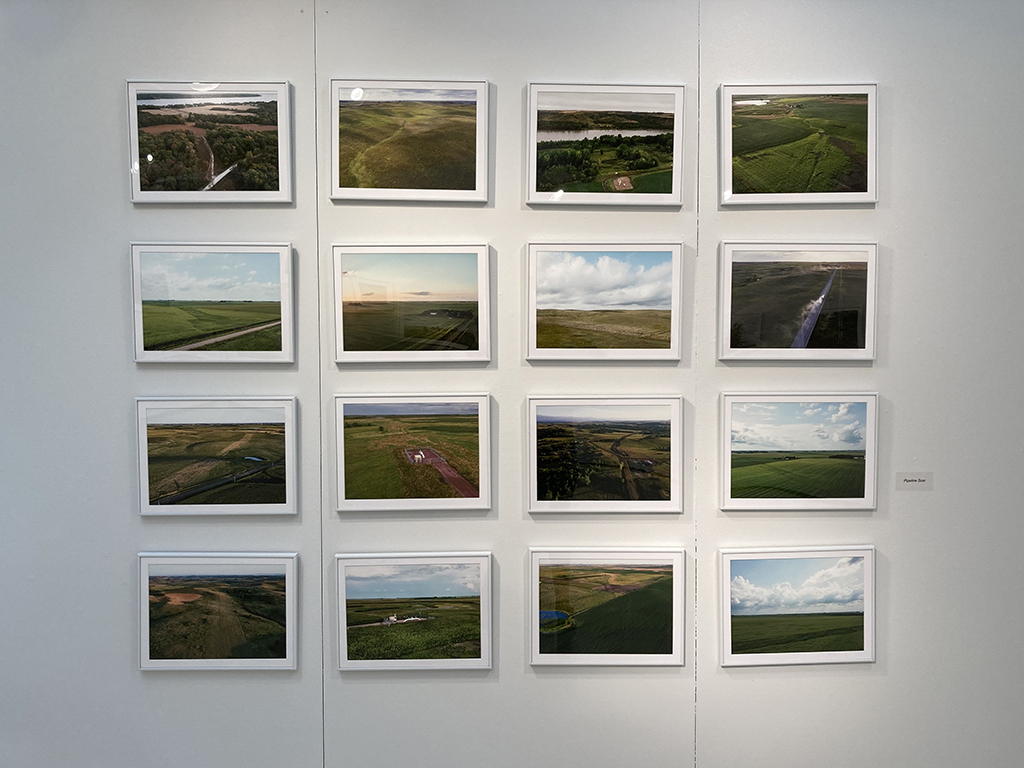Meghan Kirkwood: Production Landscape

Shown: Lake Oahe from #Views from DAPL Series, 2017
February 13 – March 14, 2023
Reception: February 23rd, 4 – 6 p.m.(Post poned due to weather)
Meghan Kirkwood is a documentary photographer focused on social injustice Kirkwood’s recent projects include creating a collection of photographs that profile the path of the Dakota Access Pipeline in one of the four states it crosses. The project did not attempt to be comprehensive in nature, but to contribute to a broader context for a politicized topic. The images highlight the physical disruption of the landscape it traverses as well as surrounding environments and together the series examines the ways in which documentary images of land can provide context to current debates related to land-use and natural resource extraction. Kirkwood’s photography has been exhibited throughout the United States, Europe, Mexico, and South Africa.
About Production Landscape:
This series explores the evolution of a production landscape within the Bakken region of western North Dakota and the lands surrounding the Dakota Access Pipeline. New developments in hydraulic fracturing and horizontal drilling technologies resulted in one of the largest natural resource development booms in the twenty-first century within this remote area of northwestern North Dakota made up of large ranches and national parks. The increased rate of oil and natural gas extraction led to the construction of the Dakota Access Pipeline (DAPL). This massive construction effort, together with protests from members of the Standing Rock Sioux tribe and numerous Native and Non-Native supporters, focused national attention on rural North Dakota. The DAPL now transports around 500,000 barrels of oil each day.
The United States has the largest network of pipelines in the world, which form a subterranean industrial landscape. J.B. Jackson describes a landscape as “a ‘synthetic’ space, a man-made system of spaces superimposed on the face of the land, functioning and evolving...a composition of man-modified spaces to serve as infrastructure or background for our collective existence.” The Bakken region has been developed for agricultural and energy production since the late nineteenth-century. During the most recent boom, however, oil and gas companies reshaped the landscape at unprecedented scale. New roads, well-pads, and unfinished housing developments now stand in place of open fields. Hundreds of miles of new pipelines -- including large stretches of the 1,172 mile Dakota Access Pipeline -- are now etched into native North Dakota rangelands. For many long-time residents, the region has changed beyond recognition.
Over a five-year period I explored the Bakken region and the path of the Dakota Access Pipeline in the four states it crosses: North Dakota, South Dakota, Iowa, and Illinois. As a native New Englander and someone who benefits from the oil and gas resources extracted in the Bakken, but who lives at a distance from its source, I wanted to see its impacts on local environments, communities, and economies. Further, I wanted to inform myself of the scale of the project and view the range of agricultural and community landscapes reshaped by the pipeline and its operation. Driving adjacent, mile-by-mile, I studied the pipeline as a form and force reshaping the land.
About the Artist:
Meghan Kirkwood is an Assistant Professor of Visual Arts at Washington University in St. Louis where she serves as area head of Photography. She earned a B.F.A. from Rhode Island School of Design in Photography before completing her M.F.A. in Studio Art at Tulane University and PhD at the University of Florida. Kirkwood’s photography has been exhibited throughout the United States, Europe, Thailand, Mexico and South Africa. Her photographic research looks at the ways in which landscape imagery can inform and advance public conversations around land use, infrastructure, and planning.
Contact Us
gallery@svsu.edu
(989) 964-2291(989) 964-2291
UAG Coordinator
Department of Art
Shaun Bangert, Chair
Office
University Art Gallery
Arbury Fine Arts Center
Contact Us:
To be added or removed on
postal mail or email:
gallery@svsu.edu

